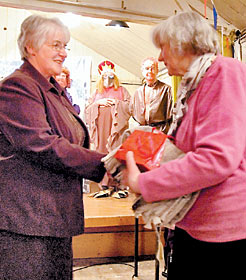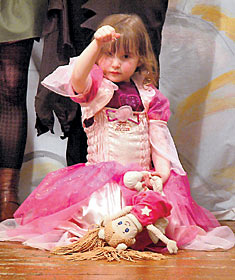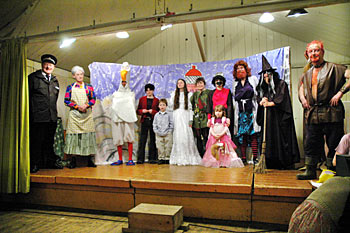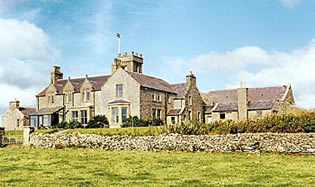Well, the harvest moon has been and gone and so too has the time of the aald hairst days.
I’m always a little sad when that time of year fades away. Despite the sometimes unpleasant, hard work of those days when, as I’ve often said, there were nevertheless great days and great memories. Even on the difficult days when crops lay raffled or flattened, folk working together could still enjoy overcoming such obstacles.
And who of that workforce could ever forget the golden days when the sun was shining; when fields of golden corn and ripening oats coloured the Orcadian landscape; when the crop stood safe and ready for shearing, stooking and building into stacks. Such pleasant memories can never fade. And at the end of the season there was the abiding pleasure of celebrating the completion of the year’s harvest work.
Yes, I know those days are in the past but the memories remain – important memories I may say, since working together with neighbours and others was very satisfying and gave real pleasure. It’s a pity that today’s young farmers, or other young people for that matter, will never experience such activities and never quite understand the enjoyment of those bygone times.
So, in North Ronaldsay, though the alternative harvest of silage/barley wrapped bales and the like, gets done mainly much earlier in the year and no longer does one see and hear the clicking-clacking binder, or see the stooks and then hand-built stacks, we still like to have an old fashioned Harvest Home.
Our hall decorations of mainly simmans and large ‘flackie’ designs made from straw —renewed not so long ago and so far lasting well. And the oat sheaves are now replaced with sheaves made from another, once much-used material, “stowers” (a tall coarse type of grass used to build-in and protect binders). Some say, as they maybe play the devil’s advocate, that those items are no longer appropriate. But such materials provide great decoration and they will always symbolise the harvest — however changed the produce might be — just as the red poppy of Flander’s Fields symbolises the sacrifice of those who gave their lives for freedom in war.
Evelyn Gray, president of the North Ronaldsay Community Association (NRCA), welcomed the company and the guests and thanked the very many folk who had worked hard to make the evening possible.
In addition, I made a short report about progress with Memorial Hall affairs. Tar had been purchased for tarring the building, as had road-repair emulsion for repairing the parking area in front of the hall. Two windows remain to be bought and installed.
Perhaps, as I suggested, if we got another really good spell of weather we might still, this year, tar the hall. I noticed in one of the old minute books of many years ago a decision had been taken to carry out this work in the month of November. So we may yet have a grand tarring day.
Jerry Wilson, recently retired veterinary surgeon, was our Harvest Home speaker. Jerry was accompanied by his wife Evelyn. The North Ronaldsay Community Association’s other guests were our man at the Orkney Auction Mart, Jim Linklater, with his wife Elizabeth. And Bill Carstairs, also a veterinary surgeon, just retired. Bill had for many years been our North Isles vet and a familiar presence on the island. His wife, Olive, very disappointingly, was unable to be present. Bill was our first Harvest Home speaker when in 1990 the NRCA returned to the old venue of the Memorial Hall.
Incidentally, on this occasion, there were three other previous speakers from this period present: Howie Firth in 1991, Willie Tulloch in 1993, and David K. Scott in 1996 — the two latter speakers both local men living outwith the island.
Anyhow, as I was saying, this return to the Memorial Hall happened after a lapse of nine years when, for that time, the event was held in the New Community Centre (opened in 1981). So Bill’s return to a Harvest Home after 18 years was a nostalgic trip back in time.
Also among the Association’s guests was the band, who had very kindly come from Kirkwall and Stromness to play: Lesley MacLeod. Dave Linklater and Hamish Bayne.
There is no building, I think, so appropriate for a Harvest Home as the Memorial Hall. It has real character and one feels completely at home in surroundings that go back 87 years. There is a wonderful dance floor, and no nonsense about using the traditional slipperine — health and safety indeed! Even from the time of Robert Burns and later in Scotland when the sometimes very formidable dancing masters were travelling around the country giving dancing lessons, slivers of wax were used on the various types of floors so as to enable folk to easily turn and glide.
After a magnificent meal, that included the mutton of our native sheep, blessed by the Rev John McNab from Sanday, Jerry Wilson rose to give the Harvest Home speech.
Jerry chose to deliver the oration in rhyme. He referred to his early days in his native Fair Isle, mentioning the hairsts of those days and his inspiration to become a vet.
He went on to expand on a long career as a veterinary surgeon, telling of many escapades and of various amusing episodes when travelling round the farming community.
Jerry concluded his very original, and enjoyable, Harvest Home address and invited a company of almost 100 to be upstanding and to toast the harvest.
Gold nectar sparkled briefly in the lantern and candle-light
After this tribute to the year’s many bounties, a wonderful birthday cake was conveyed to the main table. This was Ronan Gray’s sixth birthday and after blowing out his six candles the song Happy Birthday to You was sung with gusto.
A great dance followed going with a swing and with plenty dancers on the floor. Lesley, Dave and Hamish hardly stopped playing. Sinclair Scott provided pipe music for the two swirling eightsome reels danced.
When it came to the raffle Ian Deyell and Evelyn Gray swept through this business which raised £320. Many substantial prizes were available, including one of my watercolours.
Then, Jim Linklater, in very brisk form, handled an auction. Being in his element as a professional auctioneer, before we knew where we were he had sold another watercolour of mine for £380.
Altogether a very splendid sum of £700 was raised for the Memorial Hall funds.
Tea followed, with all sorts of things to eat. Then, once more the dance got under way with a Strip the Willow (what else!) and so continued grandly until the back of two.
Auld Lang Syne brought the dancing to a close. Hot soup followed to bring to an end a great Harvest Home.
Outside, a full moon illuminated the island. The old folk would have been very pleased as a good moonlit night was generally the chosen time for most events — no cars in those days, just feet and maybe a flashlight or two.
I left the “Aald Hut” at 3am, or later, and, as I mostly do, I thought about all those islanders now long gone. Would they, I wondered, come back for an hour or two, with fiddles and melodeon, and relive the great days of the past?
I like to think that they might but before the long night was through, they would disappear like the Merry Dancers that shimmer and dance across the wintery skies.
Winter Mood
by Robert RendallDay comes on silent foot, and earth awakes.
Within their stackyards farmers come and go.
In yonder field the ploughman, leaning low.
Furrow on furrow o’er the landscape makes.
He from the stillness of the morning takes
A quiet mind, and motions calm and slow.
Ah! Would that I with him might feel the flow
Of days and years beside these hills and lakes.
What wealth of inward joy and peace have they
Who shepherd flocks or till the fruitful soil,
Fulfilling ‘neath the heav’ens’ infinitude
Their daily task, nor wander far away;
Each on his native croft content to toil,
Season by season, matching Nature’s mood.





